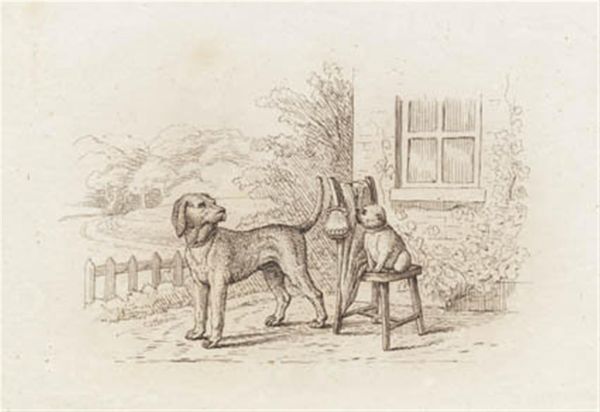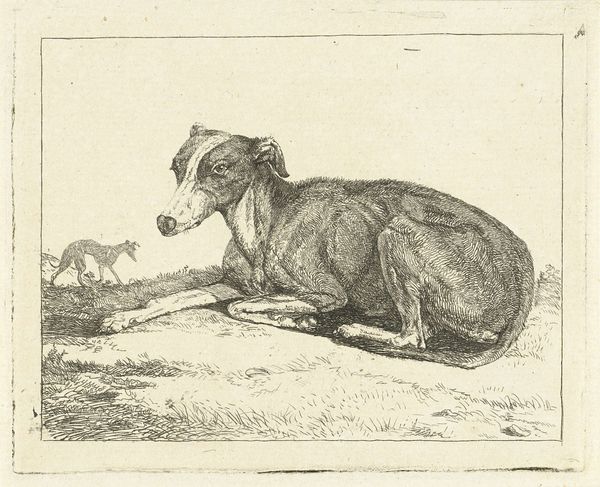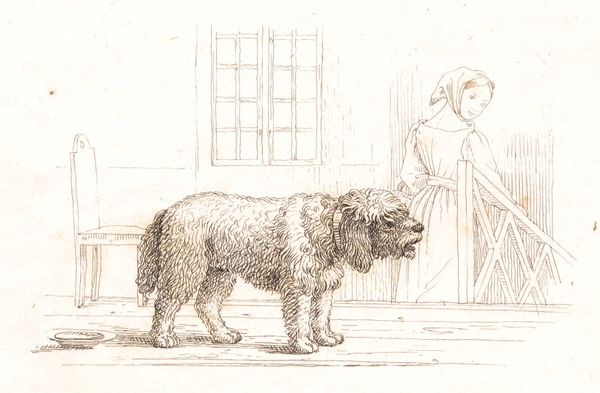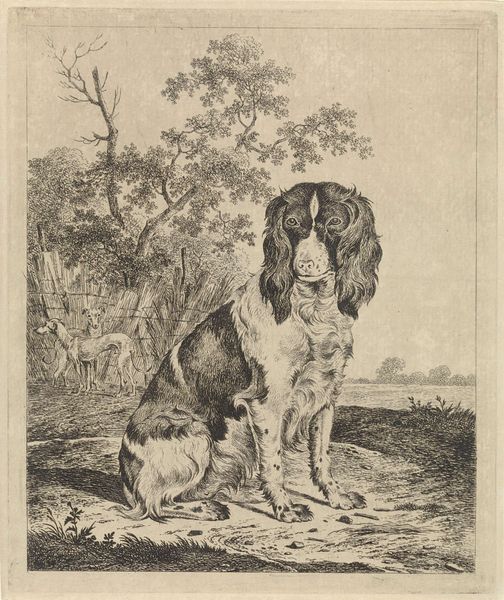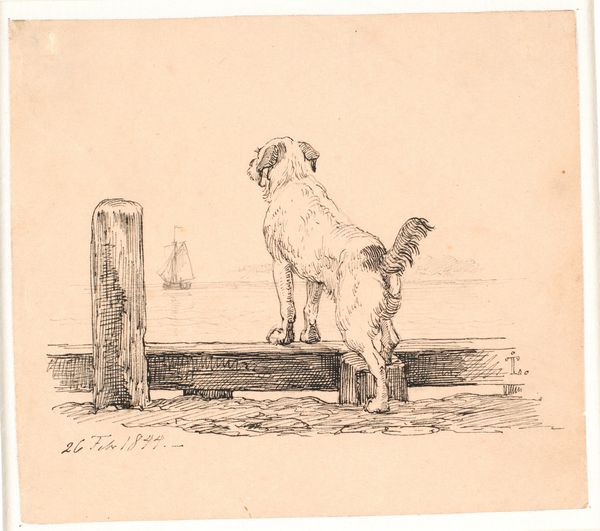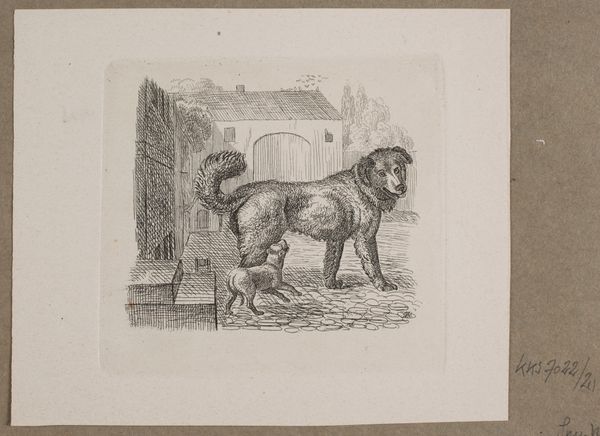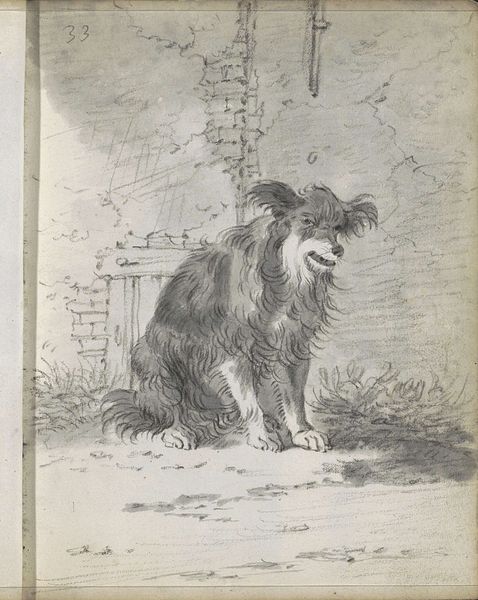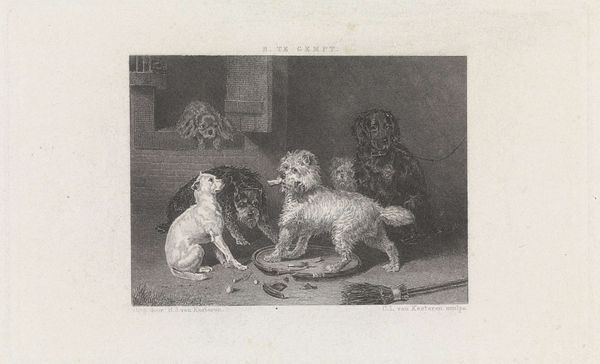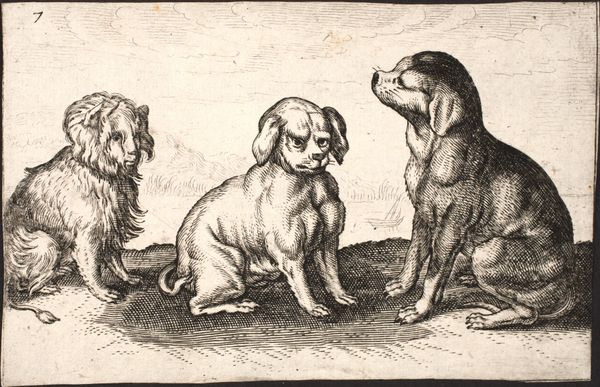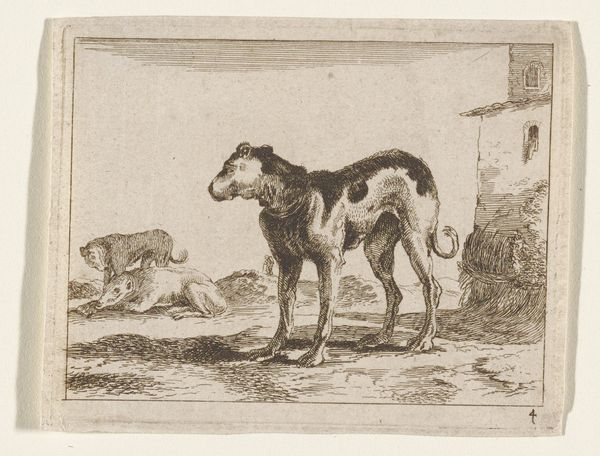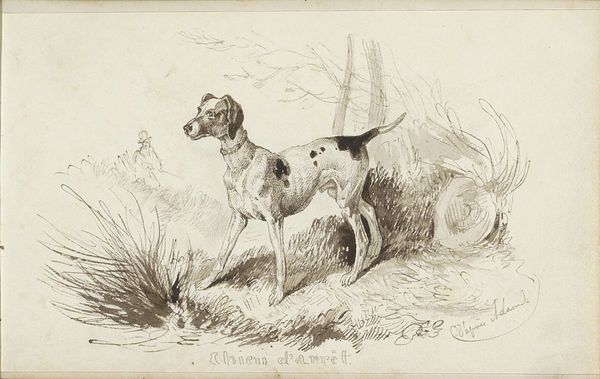
Illustration til "Halvhundrede Fabler for Børn" af Hey 1834
0:00
0:00
print, engraving
# print
#
landscape
#
figuration
#
romanticism
#
line
#
genre-painting
#
engraving
Dimensions: 105 mm (height) x 132 mm (width) (bladmaal)
Editor: Here we have an illustration from 1834 by Martinus Rørbye, called "Illustration til 'Halvhundrede Fabler for Børn' af Hey," rendered as an engraving. It depicts two dogs, one standing and another sitting regally on a stool. What strikes me is the implied narrative—almost like a scene from a fable brought to life. What do you see in this piece? Curator: I'm immediately drawn to the dog on the stool. Its elevated position and direct gaze imbue it with a sense of authority. Notice how the artist subtly uses visual cues -- the height, the clear definition of the dog versus the sketchier rendering of the natural landscape -- to imply a symbolic hierarchy? Editor: That’s interesting; I hadn't considered that. The dog standing on the ground looks bigger and, well, like a typical dog in a yard. Do you think the size of the figures play into that as well? Curator: I believe so. Think about how animals in fables, particularly in illustrations for children, often act as stand-ins for human characteristics or social roles. This smaller dog could be meant to symbolize someone in a position of power, maybe even a judge or a king holding court. Editor: That makes me reconsider the landscape in the background; it feels much more like a stage now. Are the buildings or fence important? Curator: Perhaps representing civilization versus nature, boundaries that contain certain aspects, not unlike roles in social environments. Also, consider that engravings often aimed for mass production and dissemination. Images like these became tools for instructing children in morals and societal values, using instantly recognizable animal archetypes. What do you make of the seeming informality of the lines, yet the rigid allegory? Editor: Now I am understanding that it's less a portrait of two random dogs, and more about representing societal structures! The piece as a whole resonates differently for me now. Thank you for that. Curator: It's a reminder that images often hold embedded cultural meaning we can unlock through careful examination. I love how that affects an initial reaction to the artwork!
Comments
No comments
Be the first to comment and join the conversation on the ultimate creative platform.
